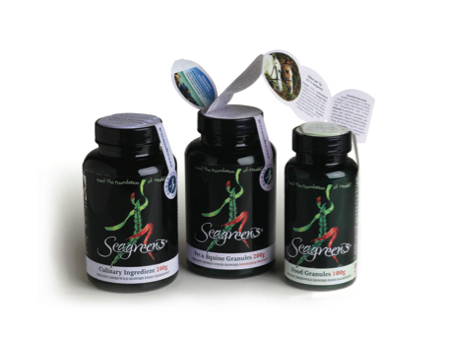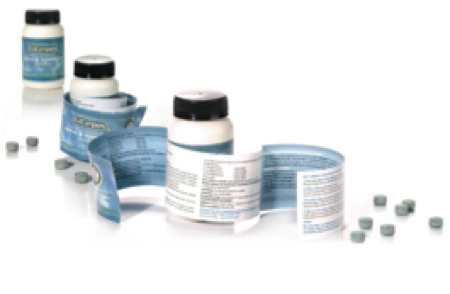The global nutraceutical industry is currently valued at US$140m and is expected to reach approximately $205 billion by 2017. Take a walk around your local convenience or health store and you will see a vast array of products to remedy most ailments and to help keep your body fit and healthy. In fact, science and technology has improved so much in the past 20 years that there is a far greater range of products available at affordable prices than ever before. Added to this, the industry has seen a dramatic rise in recent years of specialist companies selling health foods and nutraceuticals, many of them with highly trained staff ready to offer advice.
The word nutraceutical is essentially an umbrella term for the vast array of products we can purchase over-the-counter or off a shelf that include herbs, dietary supplements, probiotics, amino acids, botanical and vitamins; that is, non-prescription substances. Although most of us regularly take these products without any issues, careful attention needs to be taken to what we take and how much of it is taken, especially when combined with other preparations and medications. This article focuses on the potential perils of over-use and abuse and how careful marketing and labelling might be able to alleviate these issues in the future.
Well-read instructions?
Evidence from prescription drugs suggests that patients do not pay proper attention to the user instructions. It is estimated that around four out of 10 patients have such poor compliance that they are unlikely to derive any benefit at all from their medicines. Furthermore, in the US, about 125,000 hospital admissions annually are attributed to patients not adhering to the prescription drug user information. Clearly, misuse and patient non-adherence can lead to serious problems.
Likewise, if we buy a product such as a nutraceutical that is readily available over-the-counter, should we not be treating these products with the same sobriety? After all, used in excess or in combination with other contraindicating products, nutraceutical misuse could also lead to side-effects or, at worst, a serious health issue.
Embracing industry changes
Unlike pharmaceutical products, nutraceutical manufacturers do not currently have to undergo the same rigorous regulatory and compliance procedures to get approval to market a product. However, this may well change in the future; and, if it does, the industry can expect a major challenge. Whereas nutraceutical sales are booming, it is still a highly competitive industry with the top five companies representing 20% of the total market share.
Just because the product can be picked up freely in a store without the intervention or say so of a physician or pharmacist, some consumers assume that they are always safe for them to take, in any dose. In fact, these products are ordinarily completely safe to take in the recommended dosages laid out on the package and will have undergone a high level of testing prior to release. However, in combination with other products or alone at higher dosages, they could potentially lead to health concerns.
There are some commonly known supplements that can interact with traditional medicines and may either reduce or even intensify the effectiveness of the drug. Garlic, ginger, gingko and glucosamine, for example, may increase the risk of bleeding when combined with anticoagulation agents. Conversely, black tea, goldenseal, psyllium and St John’s wort may decrease the effectiveness of anticoagulation therapies and antiplatelets. Even something as seemingly benign as fish oil may, in high doses, increase the effect of antihypertensives. Dr Rice, a site leader at Lakeside Hospital noted in Today’s Hospitalist that one of the most common interactions would be a cranberry or garlic preparation, stating: “Both cranberry and garlic may increase bleeding risk when combined with warfarin.”
Ensuring safe nutraceutical use
With big investments being made in preparing and formulating the product, it is the claims and efficacy of the product that sell it. However, considering the fact that most in-store purchase decisions are made in just a few seconds, one must accept that consumers don’t always take the time to stop and fully examine the details on the packaging. Left to their own devices, consumers may well simply base their purchase decision on the appearance and presentation of the label. For this reason alone, labelling and packaging is of utmost importance on the product, especially when differing product doses are concerned.
Often, the consumer is largely responsible for determining whether the product will help them to achieve their goal, so the message on the pack needs to be clear and concise. Even with the help of a trained assistant, the question may remain open as to whether sir or madam would ‘like to give the product a try’. The challenge does not stop there either; after you have purchased the item from the store, the only form of communication you have with the product and the brand is the user-instruction. There is a need for very carefully laid out information to ensure the end-user gets the best out of the product. In fact, the better the level of information provided, the better chance there is the consumer will adhere closely to the recommendations and thus derive better benefits from it.
The role of labelling on nutraceutical packaging
From the brand name to the dosage, indications and contraindications and even possible side-effects (when applicable), all of this user-instruction must be included within the confines of the label. At the same time, user-instruction must be presented in a format that is easy for the consumer to understand. Table format charts with age guidelines and dosages and even pictograms can make the information easier to follow.
How can labelling help to provide these functions? In many instances, a full wraparound self-adhesive label provides the solution; but, sometimes, there simply isn’t enough space to include all of this information. Reducing font size or eliminating text is not an option as it only leads to compromised user instruction.
What is the solution? The multipage label has long been used in the pharmaceutical and clinical trial sectors to provide additional pages of user-information and guidance, and has been growing in popularity on nutritional products, food supplements and nutraceuticals during the last five years. Comprising a self-adhesive label with a leaflet or even a booklet attached to it, the multipanel format allows for additional pages of information to be included whilst occupying only the space of the label. This type of label can be of particular benefit when a lot of user-instruction is required or needs to be presented in a number of different languages for multimarket distribution.
Multipage labels in application
Anglo-Scandinavian venture, Seagreens, recently chose a tamper-evident style multipage label for their nutrition products. Setting the standards for seaweed harvesting and production in Europe, the 12-page label has been applied to the lid of the product (see Figure 1). A spokesperson for the company explained: “This is a labelling concept that is perfect for a brand such as Seagreens to tell a complete story. First, we need to explain to our customers how they can benefit from nature’s vegetable garden beneath the sea before we can even begin to detail what our individual products can do — whether helping to provide the optimal mineral balance or acting as a salt replacement or an aid to weight loss. This is the first time we have been able to provide, on pack, at the point of purchase, the remarkably comprehensive nutritional profile and nutritional information that is the foundation of our consumer proposition.”

Figure 1: Seagreens informational label with tamper-evident tab
Aspen Pharmacare, South Africa, needed a way to add a large amount of information onto the small container of their KidComplete products — a range of chewable tablets for children. Available over-the-counter, the product helps overactive and inattentive children to quickly and easily get the right balance of nutrients. Avoiding the need for a loose leaflet and outer carton, the multipage label occupies only the space of the primary label and offers the brand owner a number of benefits. User instruction has been included in English and Afrikaans, as well as a standard barcode and contact information. What’s more, the leaflet is resealable, ensuring it has every chance of offering repeat reference to the end-user while remaining securely on the pack at all times (see Figure 2).

Figure 2: KidComplete supplements from Aspen Pharmacare, South Africa
German-based manufacturer, Inko, supply a range of sports and dietary supplement products across Europe. The challenge was to include user-information in additional languages directly onto the bottles of their X-Treme NOX energy drink, designed for intensive muscular effort and recovery. The result is this eye-catching 8-page overlaminated booklet style label. Printed in full colour and gold on the base label and front page, this superb looking leaflet label includes product information in seven languages (see Figure 3).
Benefits to the manufacturer
In addition to the packaging benefits, multipage labels can be added to the product or host-container in the same manner as an ordinary label. Supplied on reels, they are most typically applied automatically (or equally by hand) so there is no reduction in line speed or manufacturing output.
For more information
Stephen Moore is Client Development Officer for Fix-a-Form International, a UK-based leaflet label specialist and licensor to the world’s largest network of leaflet label printing companies.
